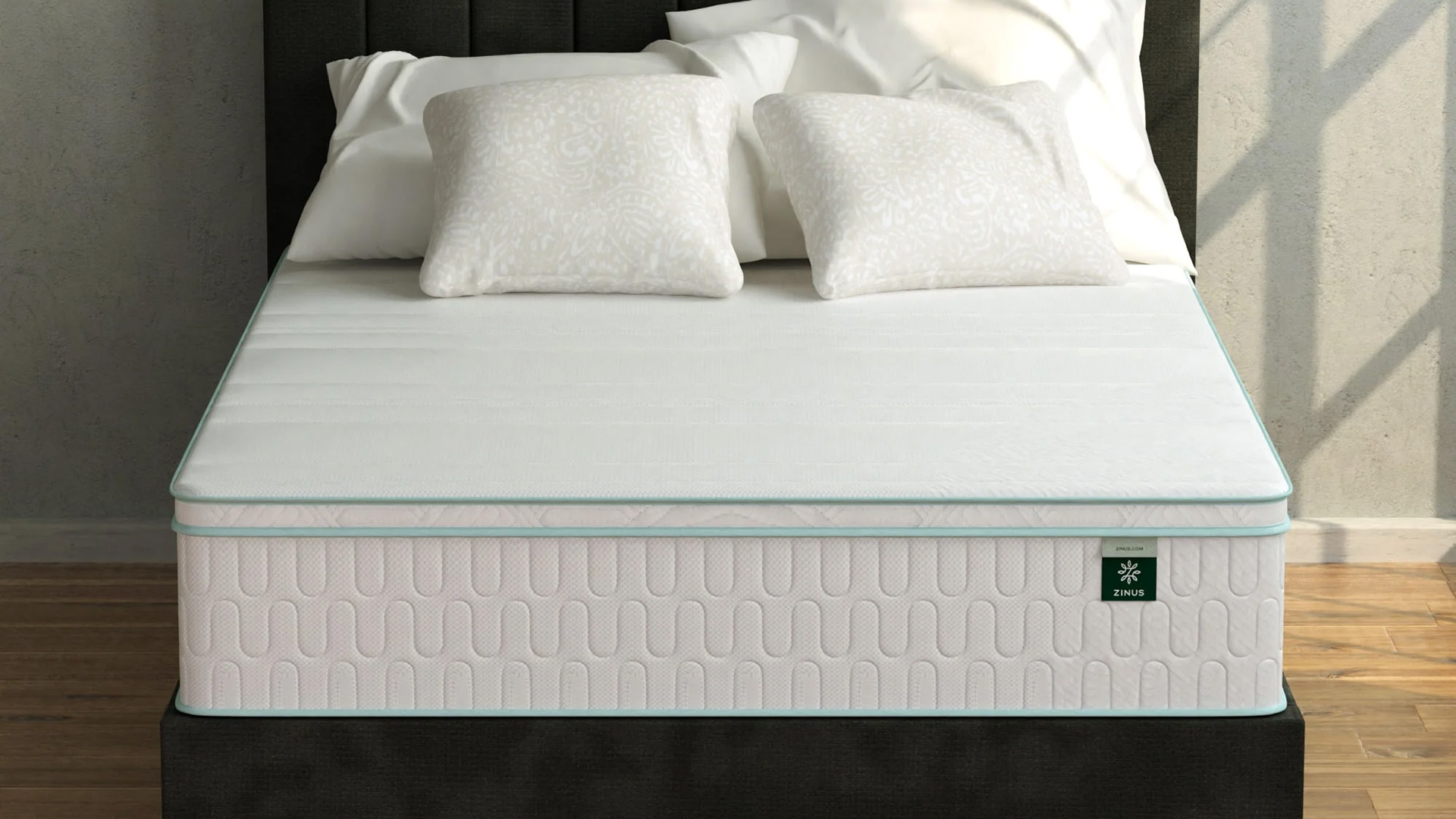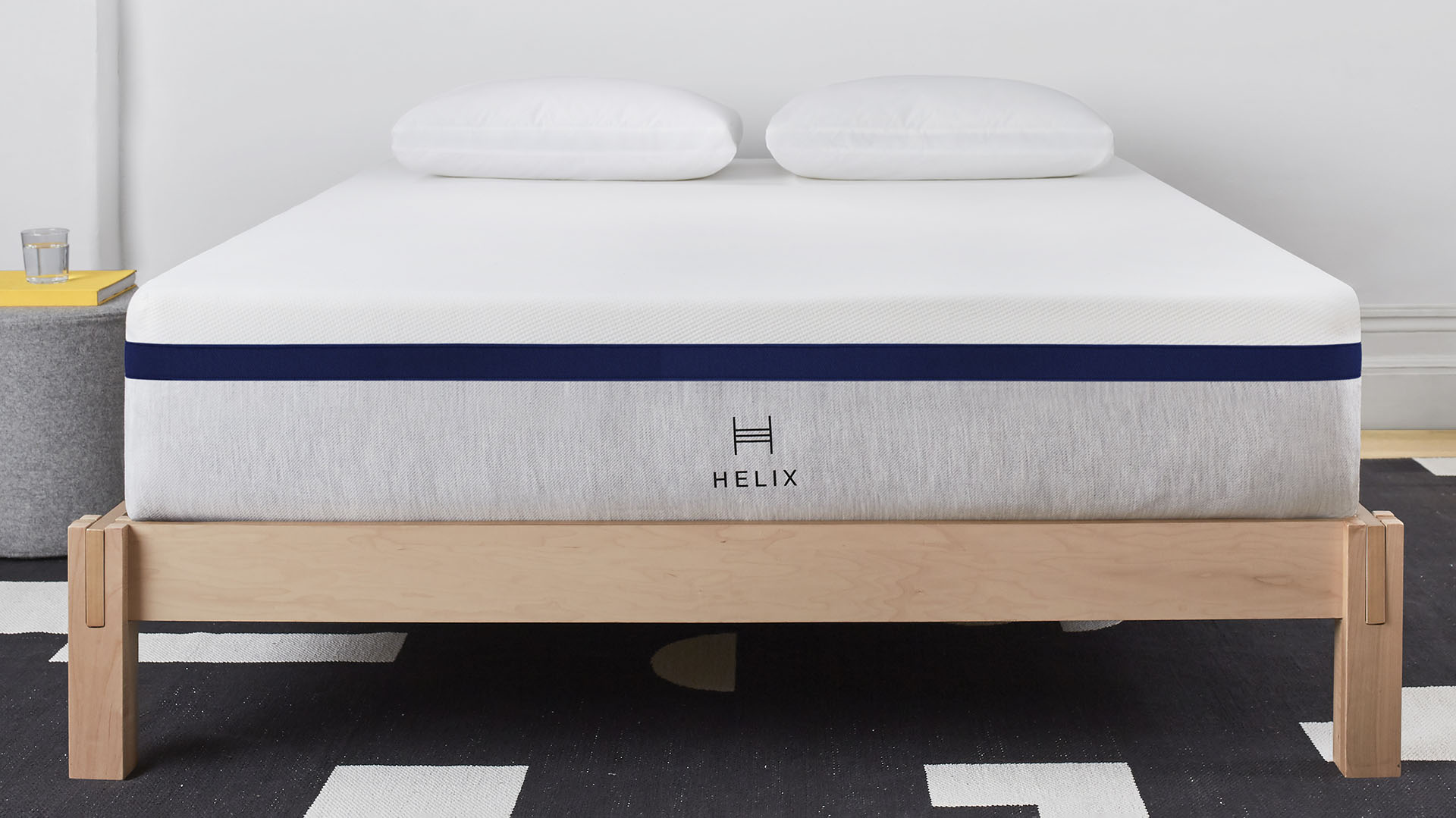What is a pillow-top mattress? And do I need one?
Discover the advantages and disadvantages of a pillow-top, and how it compares to a tight-top or Euro-top

‘Pillow-top’, ‘Euro-top’, and ‘tight-top’ are terms that you’re likely to come across when shopping for a mattress. They sound good – who doesn’t like the thought of sleeping on a giant pillow? – but you probably don't know what any of it means. These terms all refer to the top section of the mattress, and understanding them can help you choose the best mattress for your needs..
A pillow-top was once a popular feature among luxury mattresses, but it’s becoming less common. Nowadays, we tend to see more of Euro-top and tight-top mattresses. In this guide, we’ll explore what is a pillow-top, how it compares to a Euro-top and tight-top, and whether you need one on your mattress.
What is a pillow-top?
A pillow-top is a plush layer of cushioning that sits on the very top of a mattress. Made out of a comfort material, a pillow-top adds a soft ‘pillow’ feel to the surface of the bed. They’re most often found on hybrid and innerspring mattresses, and are commonly associated with luxury beds.
The pillow-top is attached to the top of the mattress by a fabric edge that sets it apart from the main bulk of the bed. This rounded, differentiated edge is the easiest way to spot if a mattress has a pillow-top.

What is a pillow-top made of?
Pillow-tops consist of a cover and a layer of comfort material. The comfort material is often foam, but it can be made from fibers, wools, gels, or other cushioning materials. Pillow-tops tend to be a feature of hybrid and innerspring mattresses, and are very rarely used on all-foam designs (we’ve never seen an all-foam mattress with a pillow-top).
Pillow-top vs Euro-top: what's the difference?
Pillow-tops and Euro-tops are very similar as they’re both designed to add an extra layer of cushioning to a mattress. The primary difference is how the top is attached to the bulk of the mattress. A Euro-top sits flush to the mattress with squared edges, while the pillow-top is raised above the mattress. Sometimes a border of fabric is used to distinguish the Euro-top from the rest of the bed and draw the eye to this luxury feature. The squared-off design tends to give Euro-tops better edge support than the bowed edge of a pillow-top.

It’s worth noting that mattress brands can be inconsistent with the terminology. For example, our favorite mattress, the Saatva Classic, is described as having a "Euro pillow top". Some brands will describe a Euro-top as a pillow-top, and sometimes top comfort layers will be described as ‘pillow-tops’, even when they don’t fit the definition. The easiest way to tell is to look at the top edge of the bed; the seams are the most obvious indicator of a pillow- or Euro-top.
Sign up for breaking news, reviews, opinion, top tech deals, and more.
Pillow-top vs tight-top: what's the difference?
A tight-top mattress is basically just a mattress without a pillow- or Euro-top. There’s no extra layer of cushioning, and the hem lies either where the side meets the top of the mattress, or part way down (known as a waterfall seam).
The addition of a mattress topper can transform a tight-top mattress into a pillow-top mattress. However, you can’t change a pillow-top mattress into a tight-top.

Should I buy a pillow-top mattress?
There are reasons for and against buying a pillow-top mattress, which we’ll cover below. Before we get started, however, it’s important to note that a pillow-top is just one part of the mattress. Both good and bad mattresses can have pillow-tops, so make sure you’re considering the rest of the build when making a decision.
Buy a pillow-top mattress if…
✅ You want a balance of cushioning and firmness: Pillow-tops generally sit on hybrid / innerspring mattresses with a firmer, bouncy feel. The layer of pillow-top cushioning then adds softness to the sleep surface, adding pressure relief to a supportive design.
✅ You want a luxury feel: The extra height and cushioning provided by a pillow-top give the mattress something of a luxurious finish, often associated with premium beds. Even the look of a pillow-top mattress has come to signal luxury.
Don't buy a pillow-top mattress if…
❌ You want to sink into your mattress: If you like the feeling of being embraced by your mattress, a pillow-top probably won’t appeal to you. Pillow-tops tend to have a bouncier cushioning compared to the hug of memory foam. The Helix Midnight has a sink-in memory foam top, but for a more responsive feel, upgrade to the pillow-top of the Helix Midnight Luxe.
❌ You need strong edge support: The rounded edges of the pillow-top mean these mattresses sometimes lack support at the perimeter. This can be an issue if you like to sleep near the edge of the bed, or use the mattress to get up and down. A Euro-top is better, or look for a hybrid with reinforced edges. (We have a guide to edge support, if you want to learn more.)
❌ You want durability: One big issue with the pillow-top mattress is longevity. As pillow-tops are generally made of less dense foams, they can start to sag with frequent use. When the pillow-top has given out, the bed won’t feel comfortable and you’ll need to look for a replacement, even if the mattress below is still good quality. The seams around the edges can also cause issues, as they are a point of weakness. You need to be very careful when moving a pillow-top mattress.

Ruth is TechRadar’s Sleep Writer. She’s here to help you find the perfect sleep setup for your budget and personal preferences. As well as keeping a keen eye on everything that’s going on in the world of mattresses, she regularly speaks to experts to help you learn how to improve your sleep habits, whether that’s by debunking sleep myths or explaining the science behind it all. Prior to joining the TechRadar team, she wrote features and product guides for new parents hoping to get a decent night's sleep, as well as writing for a variety of online spaces.